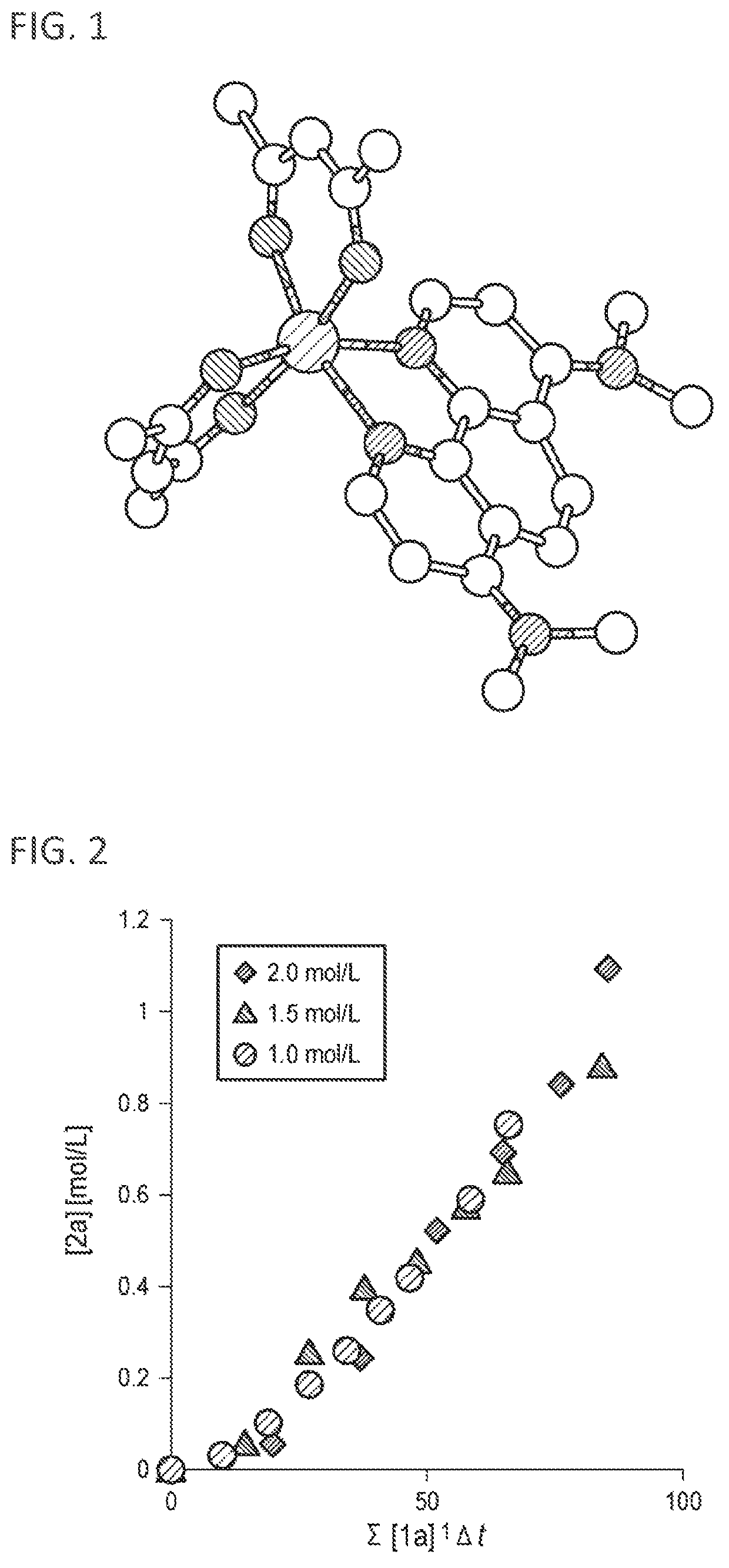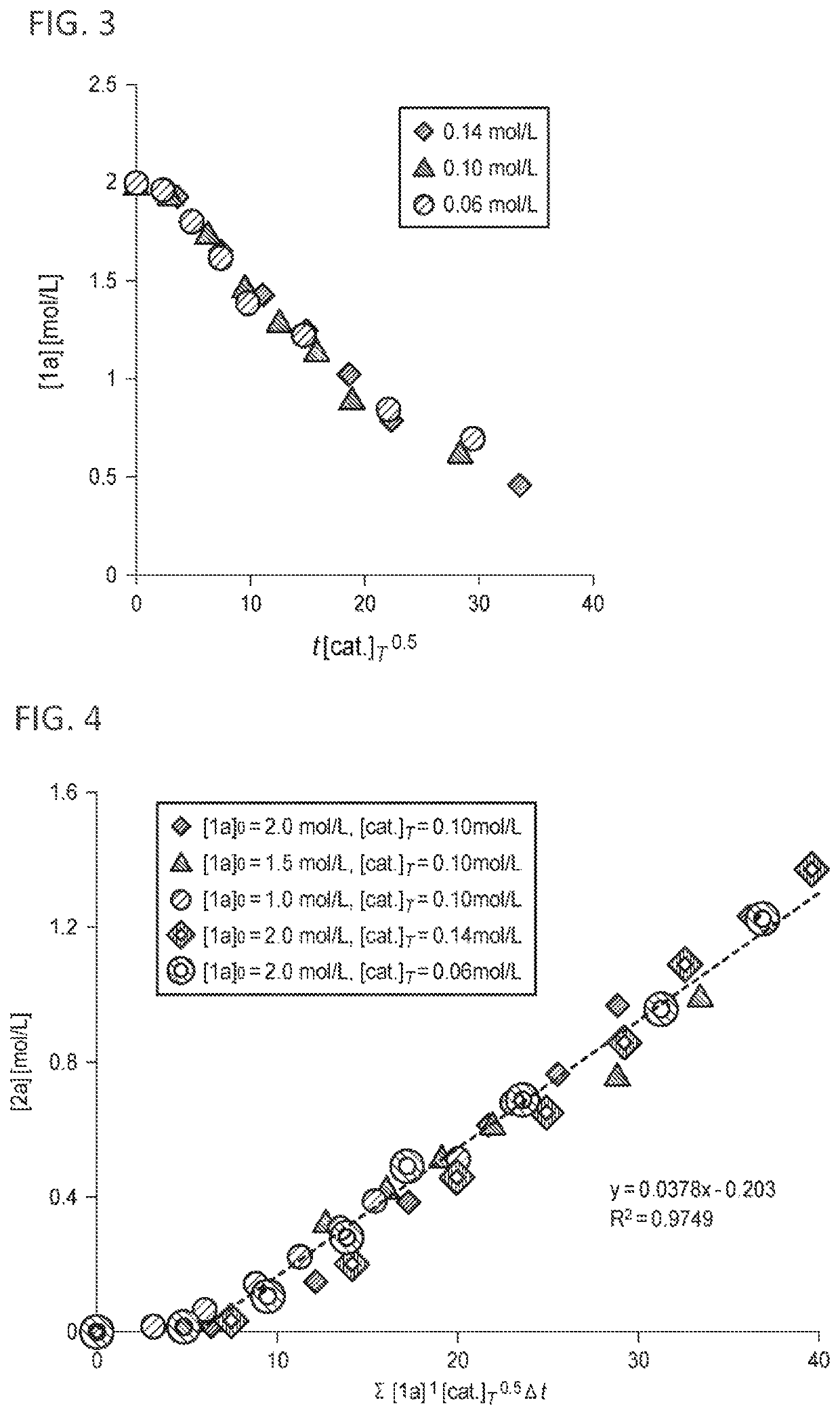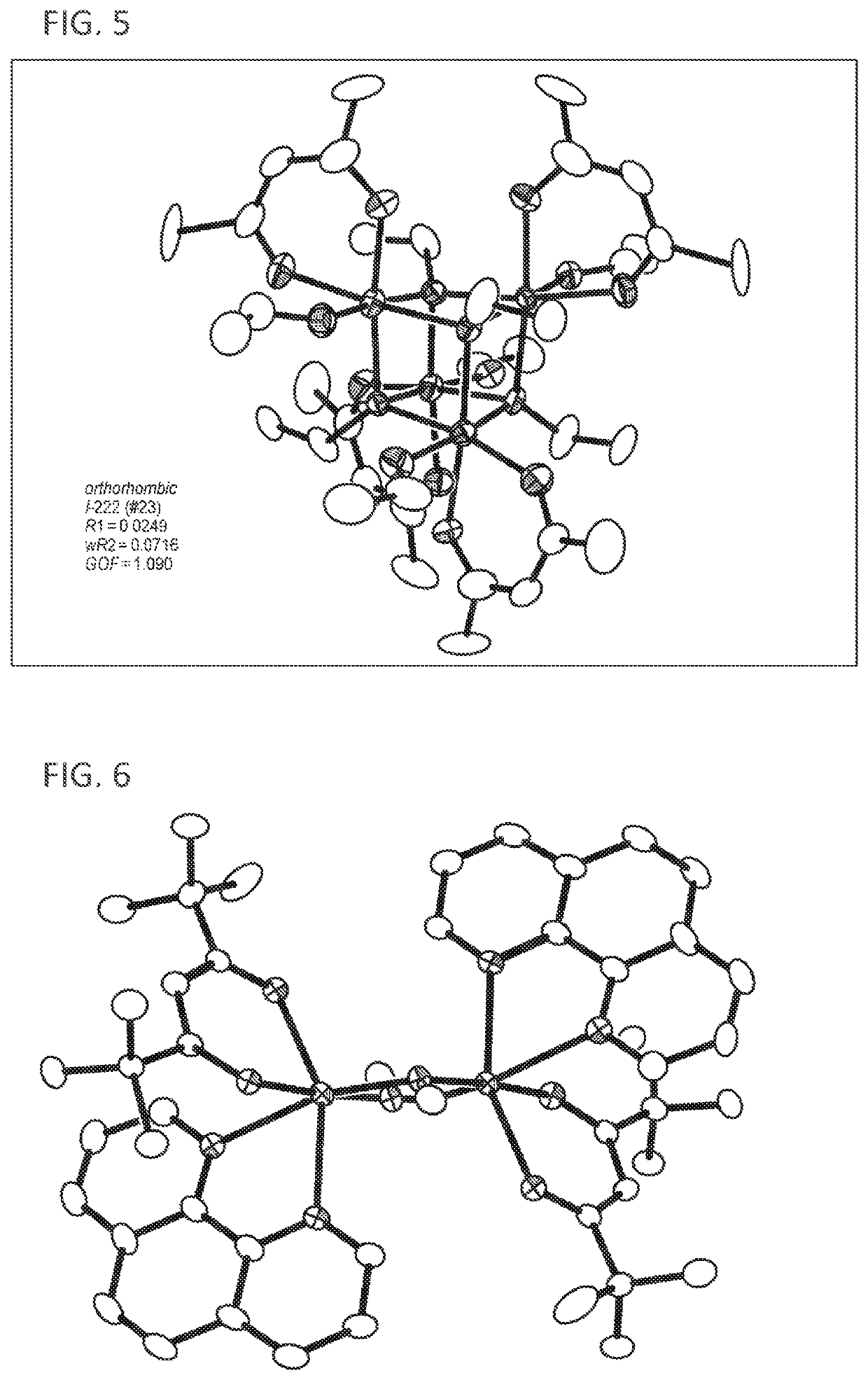Method for converting N,N-dialkylamide compound into ester compound using complex of fourth-period transition metal as catalyst
a transition metal and complex technology, applied in the direction of organic compound/hydride/coordination complex catalyst, physical/chemical process catalyst, bulk chemical production, etc., can solve the problem of difficult application of methods to conversion reactions from tertiary amides to ester compounds, difficult to be used flexibly, and difficult to achieve the effect of facilitating the transesterification reaction
- Summary
- Abstract
- Description
- Claims
- Application Information
AI Technical Summary
Benefits of technology
Problems solved by technology
Method used
Image
Examples
examples
[0244]Hereinafter, the present invention is described in detail with reference to Examples and Comparative Examples, but the present invention is not limited thereto. The analytical instruments used are as follows. All operations in Examples and Comparative Examples were performed under the argon atmosphere.
[0245]The nuclear magnetic resonance measurement was performed by using a nuclear magnetic resonance device Bruker AV 400 under the conditions of 400 MHz (1H-NMR), 100 MHz (13C-NMR), and 376 MHz (19F-NMR). All 1H-NMR chemical shifts were determined from peaks of deuterium atoms remaining in a solvent at 7.26 ppm (CDCl3), 5.32 ppm (CD2Cl2), and 2.50 ppm (DMSO-d6). All 13C(1H)-NMR chemical shifts were determined from peaks of carbon atoms in a solvent at 77.16 ppm (CDCl3), 53.84 ppm (CD2Cl2), and 39.52 ppm (DMSO-d6). All 19F-NMR chemical shifts were determined to the external reference α,α,α-trifluorotoluene at δ−63.9.
[0246]Gas chromatography (GC) measurement was performed by using...
examples 1 to 5
[Examples 1 to 5, Comparative Examples 1 to 10] Conversion Reaction from 2-Naphthoic Acid Amide (1a) to 2-Naphthoic Acid Ester (2a) Using Various Metal Precursors
[0250]
[0251]To 0.50 mmol of 2-naphthoic acid amide (1a) and 0.25 mL of 1-butanol, 10 mol % of various metal precursors shown in Table 1 and 10 mol % of 2,2′-bipyridine [ligand (L1)] were added, and the reaction was performed at a reflux temperature for 18 hours while discharging dimethylamine as a by-product from a reaction system.
[0252]A yield of 2-naphthoic acid ester (2a) at that time was measured by an internal standard method using dodecane and gas chromatography (GC). The reaction results of Examples 1 to 5 and Comparative Examples 1 to 10 are shown in Table 1. In Examples 2 and 4, each of the addition amount of the metal precursor and the addition amount of the ligand (L1) was 1 mol %, and reactions were performed.
[0253]
TABLE 1MetalYieldprecursor[%]Examples1Mn(acac)3992Mn(acac)3 (* 1 mol %)903Mn(acac)2>99 4Mn(acac)2 ...
examples 6 to 32
[Examples 6 to 32] Conversion Reaction from 2-Naphthoic Acid Amide (1a) to 2-Naphthoic Acid Ester (2a) Using Various Ligands
[0262]
[0263]A reaction was performed in the same method as Example 1 except that the ligand (L1) in Example 1 was changed to ligands shown in Table 2. The yield was measured by an internal standard method using gas chromatography (GC) in the same manner as Example 1. The reaction results of Examples 6 to 32 are shown in Table 2.
[0264]
TABLE 2YieldExamplesLigands[%]6L2937L3808L4899L53810L66211L74712L89613L99914L109515L11>9916L129717L13218L147819L15420L161621L177622L186823L197824L209325L216426L225127L237428L246529L256630L263831L277132L2868—
[0265]
[0266]In the case where 2,2′-bipyridine derivatives [ligands (L2) to (L7)] were used, high activity was obtained in the case of ligands (L2) to (L4) having an electron donating group at the 4- and 4′-positions.
[0267]In contrast, since catalytic activity decreased in the case of a ligand (L6) having a methyl group at the 6-...
PUM
| Property | Measurement | Unit |
|---|---|---|
| temperature | aaaaa | aaaaa |
| reaction rate analysis | aaaaa | aaaaa |
| temperature | aaaaa | aaaaa |
Abstract
Description
Claims
Application Information
 Login to View More
Login to View More - R&D
- Intellectual Property
- Life Sciences
- Materials
- Tech Scout
- Unparalleled Data Quality
- Higher Quality Content
- 60% Fewer Hallucinations
Browse by: Latest US Patents, China's latest patents, Technical Efficacy Thesaurus, Application Domain, Technology Topic, Popular Technical Reports.
© 2025 PatSnap. All rights reserved.Legal|Privacy policy|Modern Slavery Act Transparency Statement|Sitemap|About US| Contact US: help@patsnap.com



